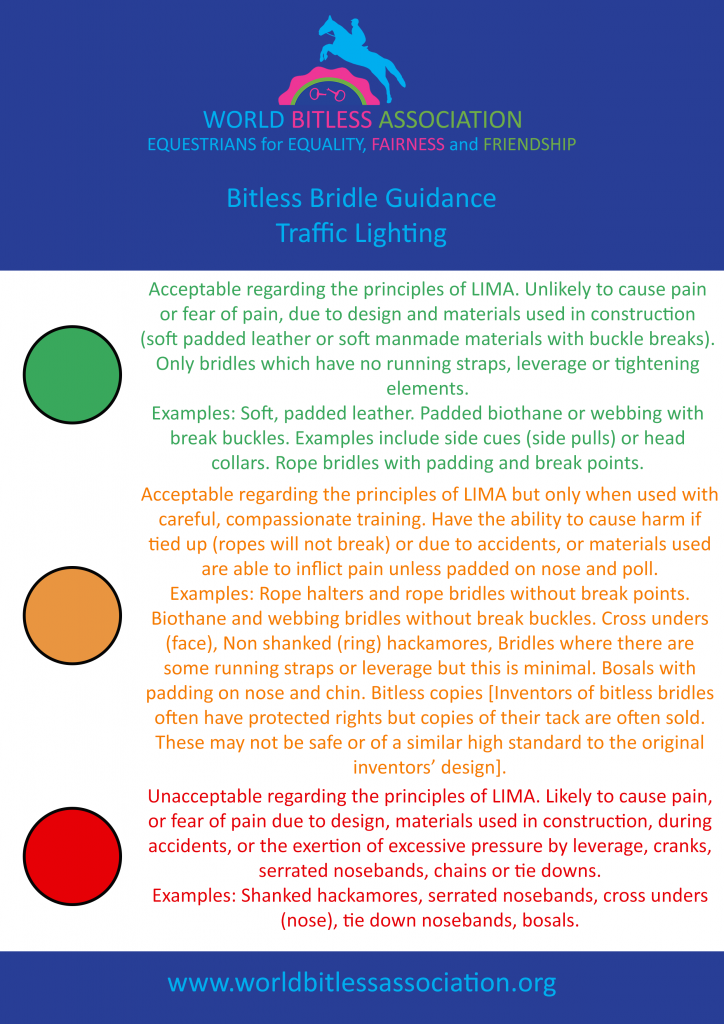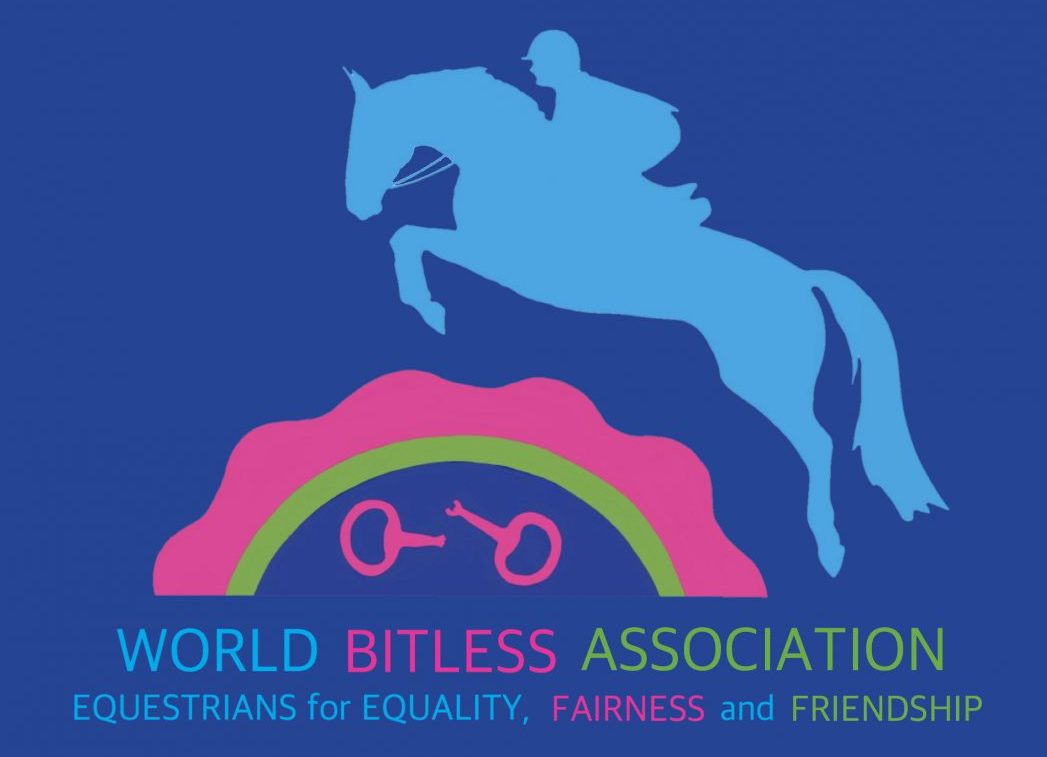
The WBA is focussed on promoting the highest standards of welfare. With this in mind we have created a general guidance on categories of bitless bridles and their application within LIMA principles
GREEN – Acceptable regarding the principles of LIMA. Unlikely to cause pain or fear of pain, due to design and materials used in construction (soft padded leather or soft manmade materials with buckle breaks). Only bridles which have no running straps, leverage or tightening elements.
AMBER – Acceptable regarding the principles of LIMA but only when used with careful, compassionate training. Have the ability to cause harm if tied up (ropes will not break) or due to accidents, or materials used are able to inflict pain unless padded on nose and poll.
RED – Unacceptable regarding the principles of LIMA. Likely to cause pain, or fear of pain due to design, materials used in construction, during accidents, or the exertion of excessive pressure by leverage, cranks, serrated nosebands, chains or tie downs.
A few examples of each category of tack:
Green :- Soft, padded leather. Padded biothane or webbing with break buckles. Examples include side cues (side pulls) or head collars. Rope bridles with padding and break points
Amber :- Rope halters and rope bridles without break points. Biothane and webbing bridles without break buckles. Cross unders (face), Non shanked (ring) hackamores, Bridles where there are some running straps or leverage but this is minimal. Bosals with padding on nose and chin. Bitless copies [Inventors of bitless bridles often have protected rights but copies of their tack are often sold. These may not be safe or of a similar high standard to the original inventors’ design].
Red :- Shanked hackamores, serrated nosebands, cross unders (nose), tie down nosebands, bosals.
